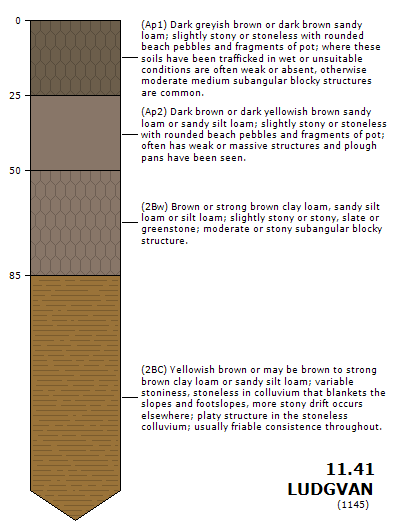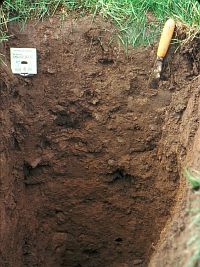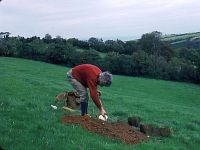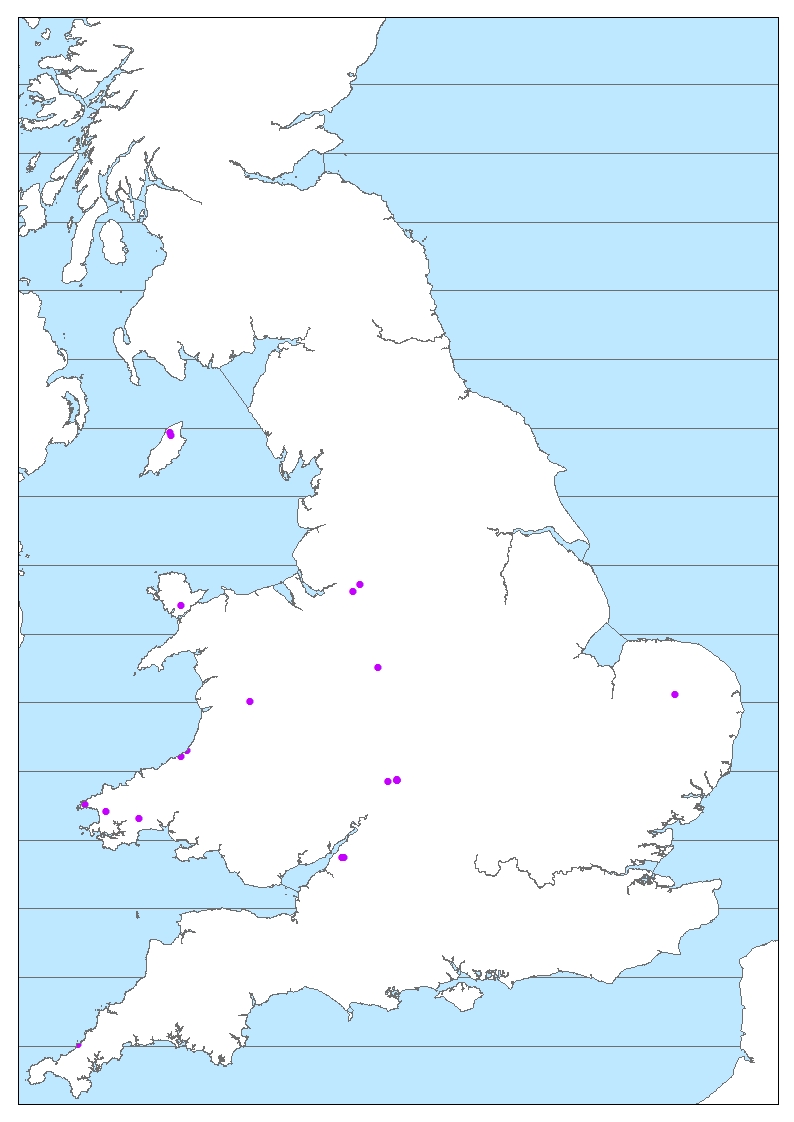
Soil Series
11.41 LUDGVAN (LV) (1145)
Definition
| Major soil group: | 11 man-modified soils | soils in which the naturally or semi-naturally developed characteristics have been drastically modified in situ as a result of man's intervention. It groups together all soils inwhich the original biological activity, nutrient relationships and, in some cases, physical properties of the upper layers have been comprehensively modified as a result of disturbance or the addition of material. Although man-modified soils retain some characteristics that enable them to be identified within natural or semi-natural major groups (1 to 8 and 10), the physico-chemical characteristics of their upper layers depend entirely on the type of modification imposed by man. Man-modified soils are defined as having: EITHER A deeply cultivated, compost-deepened or warp-deepened topsoil. OR A disrupted soil layer extending to below 40 cm depth. OR A truncated or buried soil profile. |
| Soil Group: | 4 deepened soils | These soils are defined as having either a compostdeepened or warp-deepened topsoil more than 40 cm thick. The group separates all undisturbed soils in which fertility has been substantially increased by the regular addition of bulk manures or earthy materials to the surface. It includes some of the Man-made humus soils originally distinguished by Avery (1980), but excludes those either resulting from unusually deep cultivation or overlying artificially displaced material. |
| Soil Subgroup: | 1 compost-deepened man-modified soils | All deepened soils with a topsoil horizon more than 40 cm thick resulting from the addition of earth-containing manures or waste materials from former human occupation (middens). The topsoil has a colour value and chroma of 3 or less and contains at least 1% organic matter intimately mixed with the mineral fraction throughout. Artefacts such as pieces of pottery and brick are often present and there may or may not be a sharp lower boundary showing evidence of spade or plough marks. Compost-deepened soils are normally fertile, base-rich and biologically active irrespective of the characteristics of their underlying soil horizons. |
| Soil Series: | loamy drift with siliceous stones |
Brief Profile Description

Photos
select image below to view full size version
 |
 |
Surveyed profiles in LandIS

National Soil Inventory Sites: 10Representative Profiles: 0Auger Bores: 6 |
All information Copyright, Cranfield University © 2024
Citation: To use information from this web resource in your work, please cite this as follows:
Cranfield University 2024. The Soils Guide. Available: www.landis.org.uk. Cranfield University, UK. Last accessed 19/04/2024
